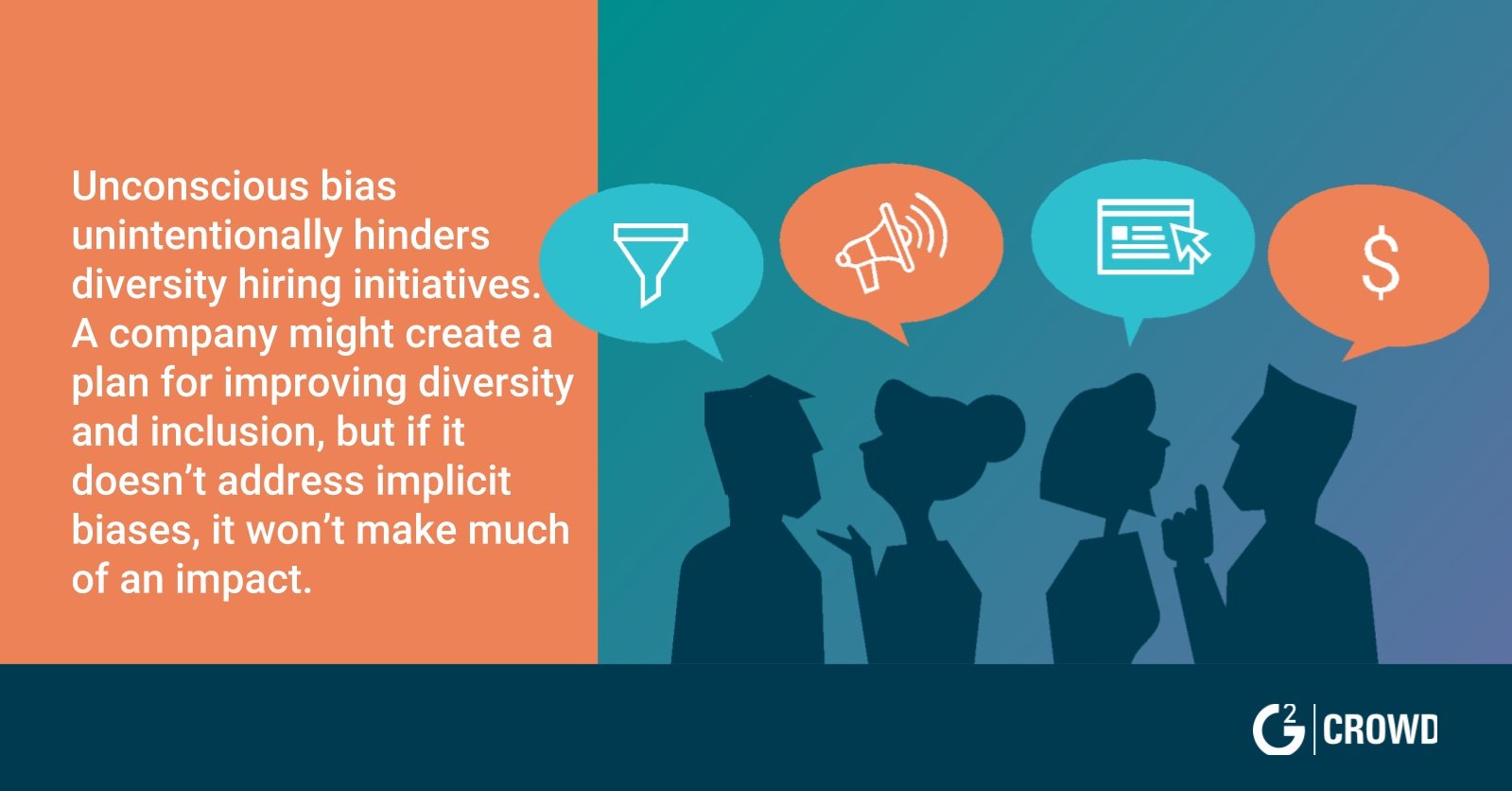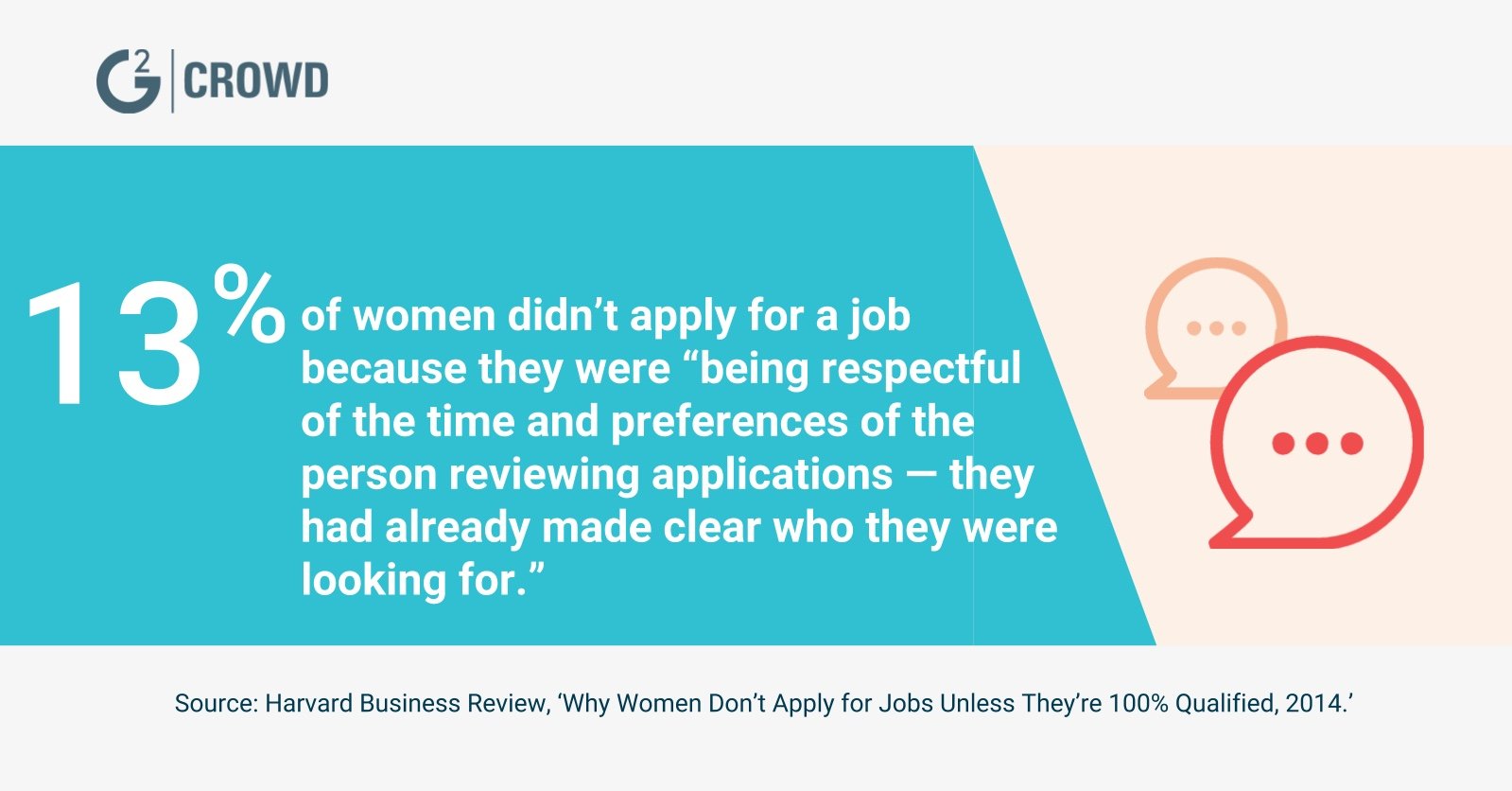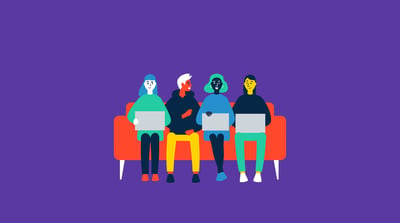January 3, 2019
 by Courtney Moran / January 3, 2019
by Courtney Moran / January 3, 2019

Hiring the most qualified talent is essential to building an effective company.
We recently published a list of the top 2019 HR trends to anticipate, and fighting unconscious bias made the list. Inclusive hiring practices (including avoiding unconscious bias) help build diverse teams and companies, improving decision-making, employee performance and the bottom line.
Although HR software can help companies with all of their employee management needs — from recruiting through offboarding — HR personnel, managers and business owners will be able to best utilize these solutions when they’re intentionally managing with inclusivity in mind.
Unconscious biases, otherwise known as implicit biases, are inherent or learned stereotypes about people that everyone forms without realizing it. Unconscious biases are social stereotypes about an individual, group or institution. Everyone has unconscious biases about various groups, and they are often not aligned with one’s conscious values.
Unconscious bias unintentionally hinders diversity hiring initiatives. A company might create a plan for improving diversity and inclusion, but if it doesn’t address implicit biases, it won’t make much of an impact.

There are a variety of unconscious biases that HR personnel, hiring managers and recruiters involved in the hiring process should understand.
Liking people who are perceived to be just like you. This can occur during the resume review process or during an interview. A resume-based affinity might occur when a hiring manager shares a common interest with a candidate, setting them up for a connection. For example, an interviewer and a candidate discover they’ve attended the same university, grew up in the same hometown or worked for the same company — the hiring manager might be compelled to move this candidate into the interview process because they instinctively like them based on one or more commonalities. Similarly, affinity bias can pop up during the interview process, say, if the candidate sets their keys on the table, and the interviewer notices they both drive the same type of car. Any perceived connection, however big or small, can result in an affinity bias.
These biases are realized when people attempt to prove them and can impact the hiring process before a candidate even walks through the door. For example, the interviewer might form an opinion based on the university the candidate attended and develop an opinion of that candidate before they meet. Perhaps the interviewer has never heard of, or is not impressed by, the candidate’s alma mater. The interviewer might then unconsciously seek confirmation of their pre-existing assumptions during the interview, setting the candidate up for failure.
This type of bias occurs when individuals are judged as a result of superficial factors such as tattoos, weight or piercings. People tend to make snap judgments when overwhelmed with information or, conversely, when sorting through very little information. These mental shortcuts are left over from early human survival skills but today can be extremely detrimental to the hiring process.
This type of bias is realized when you think someone is a good person because you like them. People are flawed; no one is perfect. But interviewers and hiring managers are more likely to overlook any gaps in a candidate’s resume, experience and skills for a candidate who they perceive to be a good person and therefore a good fit for their team or company.
Losing your own identity, individuality and thought due to forcing yourself to fit into an existing culture. This can be particularly detrimental if a company already has an issue with homogeneity from unconscious bias in hiring. If the company in question is already made up of one culture, an employee prone to groupthink might feel obligated to maintain the status quo. If this person is a hiring manager or interviewer, the pull of groupthink might encourage them to favor the candidate who most appears to fit.
Thinking something is true of a group of people rendering it impossible to remain objective when considering an individual. If a hiring manager or interviewer has perception bias, they might not be able to focus on the qualities that make a candidate most qualified for the position and instead may be hung up on their perceived gender, ethnicity or sexual orientation, to name a few.
Knowing how these unconscious biases impact the hiring process is essential to making steps to reduce implicit bias and improve the hiring process.
This occurs when the hiring manager or interviewer decides that the candidate is a great fit because they, say, went to an Ivy League school. Successful people come from all backgrounds with varied educational opportunities. Data from Google, for example, shows that college grades only predict employee performance within the first two years. Redacting all university information is a sure-fire way to remove any education bias from the hiring process.
Hiring managers and interviewers who are impressed by a candidate’s level of enthusiasm might make other assumptions about that candidate. This might simply be the case of an extroverted personality that is naturally skilled at promoting themselves. If the open role is in sales, for example, and requires an outgoing personality, this candidate could truly be a great fit. But an enthusiasm bias often leads to thinking that the most enthusiastic candidate is the most qualified for the job.
This is one that has obviously been in the press a lot lately. We’re more than a year into the #MeToo movement, and Wall Street’s regressive strategies for “dealing” with women in the workplace have recently been exposed. The lowlights include:
No more dinners with colleagues of the opposite sex.
Don’t sit next to the opposite sex on flights.
Book hotel rooms on different floors.
Avoid one-on-one meetings.
This is clearly a conscious bias, but stories like these further creep into the subconscious and have dire effects. Hiring managers, recruiters and interviewers need to push beyond seeing candidates as defined by their gender and instead focus on the candidate as a whole.
This occurs when an interviewer forgoes properly checking a candidate’s background because they favor a candidate. For example, an interviewer might be experiencing an affinity bias or halo effect, resulting in not thoroughly vetting a candidate. The interviewer simply perceives this candidate to be the most qualified, although their background, education, experience and skills are not properly checked and assessed.
Start by recognizing and understanding your own unconscious bias. A great place to start is with Project Implicit. This nonprofit organization offers a variety of tests to help users better understand their own biases.
When hiring managers and interviewers better understand their personal biases, they’re better equipped to implement the processes that put unconscious biases into check during the hiring process.

It helps to begin the hiring process on the right foot, and the best way to do this is to focus on writing an inclusive job description. A major block for all candidates who do not identify as male comes in the form of “gender-coded” job descriptions. To write a non-gender biased job description, focus on language and job requirements.
| TIP: If you need help creating job descriptions, check out our job description management software category for information on products to help users create, manage and publish job descriptions. |
Language counts — Use gender-neutral job descriptions. Avoid using language that has been found to exclude women, such as “rockstar,” “ninja,” or “superhero.” Employ gender-neutral pronouns and avoid using gender-charged words. Still confused as to what qualifies as “gender-coded” language? Use this helpful tool to help you identify and remove gender-coded language.
Job requirements — When job descriptions are overloaded with a long list of necessary requirements plus a long list of nice-to-haves, women tend not apply for the job. According to a survey by HBR, 13% of women didn’t apply for a job because they were “being respectful of the time and preferences of the person reviewing applications — they had already made clear who they were looking for.” Limit the number of requirements and reconsider major requirements; also, ask yourself if a college degree is actually essential for this role.
During the resume review, phone screen and interview process, focus on the candidate’s skills, experience, abilities and knowledge. Create an objective list of skills that the position requires to reduce bias throughout the hiring process.
Biases have the potential to reach new heights during unstructured interviews, which tend to lack defined questions and are meant to allow candidates to reveal their strengths and experiences during the conversation. This style of interview is a breeding ground for biases, exposing the interviewers to any of their unconscious biases. A structured interview, on the other hand, provides a standardized template that all interviewers must follow for every candidate applying for one job opening.
Setting diversity goals that HR personnel, hiring managers and recruiters must hit will not only provide measurable, tangible goals, but it will ensure that diversity is a part of every conversation.
Companies that look beyond the “culture fit” to focus on “culture add” will reap the rewards of a rich company culture. After all, a diverse workforce has been shown time and time again to improve market share, revenue generation and profitability.
For insights into how HR and non-HR employees really feel about employee engagement, check out the 2019 G2 Crowd Employee Engagement report.
Courtney is a former G2 senior research analyst for HR technologies, whose coverage areas include recruiting, employee engagement, and talent management. Her comprehensive research on employee engagement and HR trends has been quoted in TechRepublic, among other publications.
Sexist marketing and biased advertisements that undermine women, especially in tech, have been...
 by Sachin Gupta
by Sachin Gupta
Ever wondered why some marketing ideas spread overnight while others disappear into thin air?
 by Nanditha Vijayaraghavan
by Nanditha Vijayaraghavan
“You guys, Taylor was such a boss today at the networking event, we were manning our review...
 by Alexa Drake
by Alexa Drake
Sexist marketing and biased advertisements that undermine women, especially in tech, have been...
 by Sachin Gupta
by Sachin Gupta
Ever wondered why some marketing ideas spread overnight while others disappear into thin air?
 by Nanditha Vijayaraghavan
by Nanditha Vijayaraghavan


